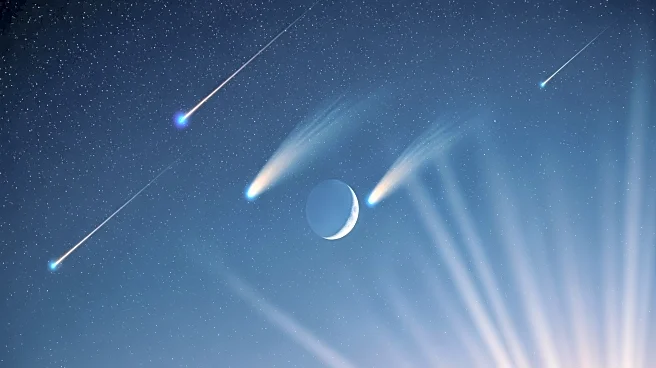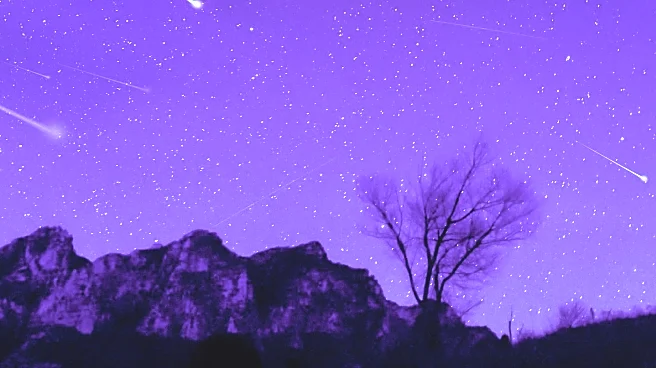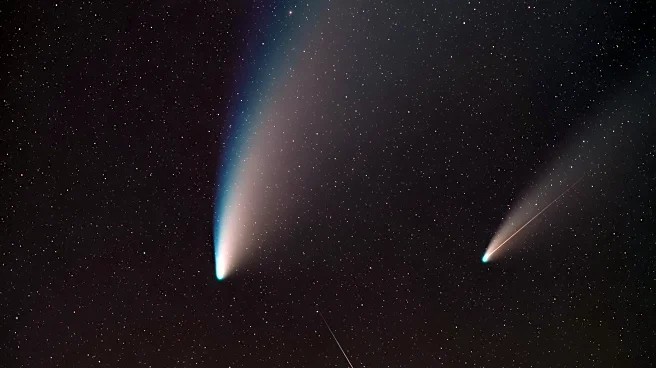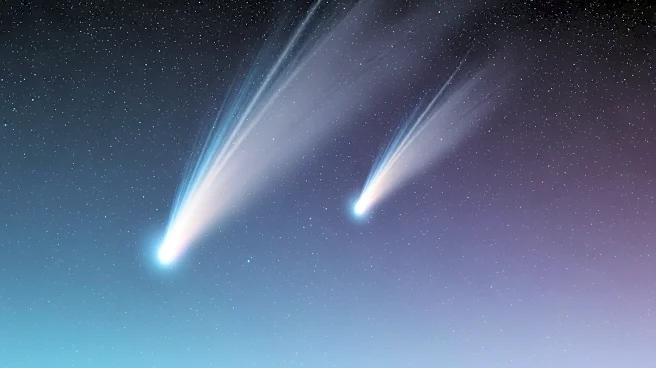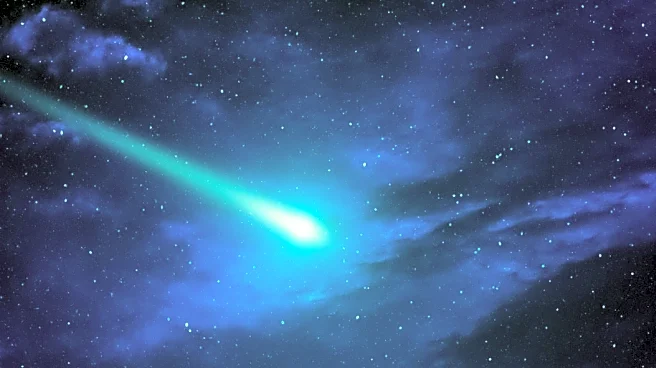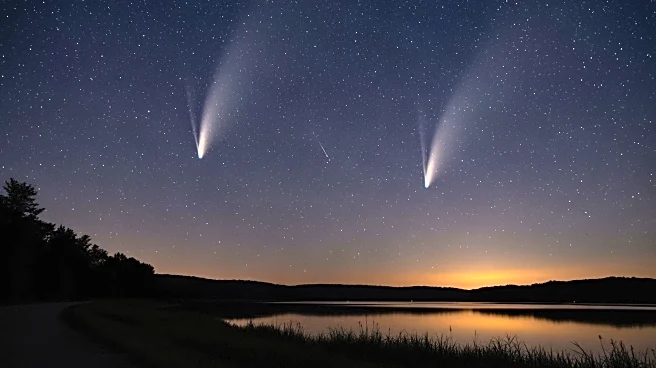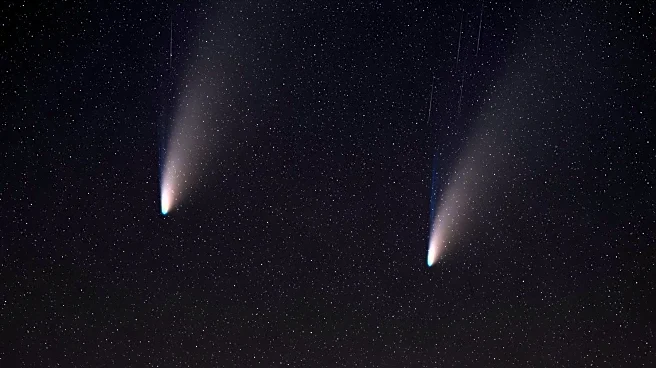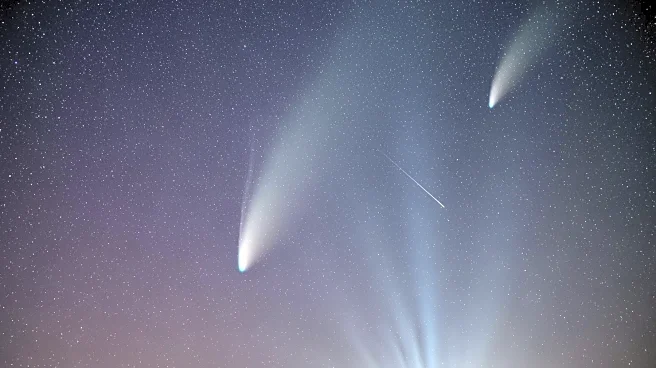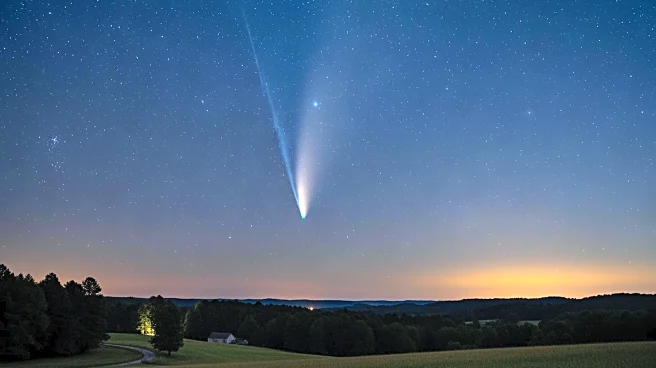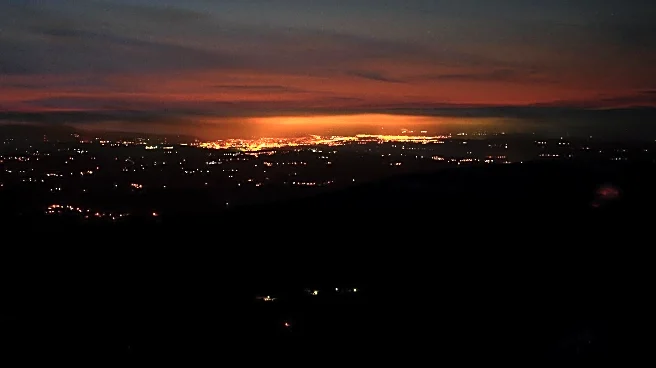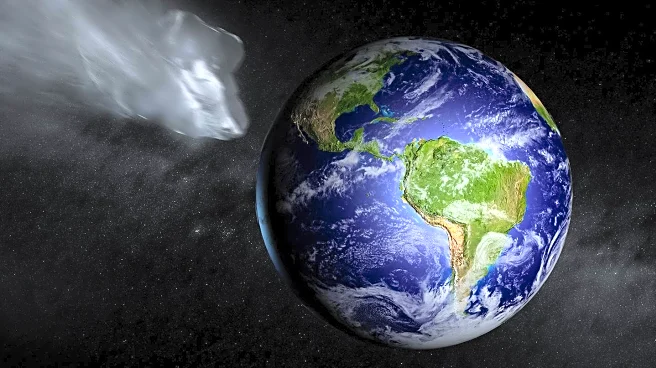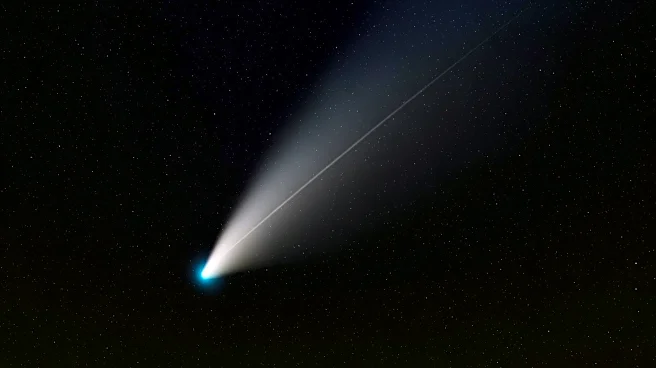What's Happening?
Two newly discovered comets, SWAN and Lemmon, are making a rare double appearance in the night sky this week. Comet SWAN reached its closest point to Earth on October 20, at a distance of 24 million miles, while Comet Lemmon will be at its closest on October 21,
at 56 million miles away. Comet SWAN, with a brightness magnitude of +6.1, is barely visible to the naked eye and is best viewed using binoculars or a telescope, particularly in the Southern Hemisphere. Comet Lemmon, on the other hand, is brighter and can be seen in the Northern Hemisphere, including Michigan, where it is visible to the naked eye. Both comets have long orbital periods, with SWAN taking over 22,000 years and Lemmon 1,150 years to orbit the sun.
Why It's Important?
The appearance of these comets offers a unique opportunity for astronomers and sky enthusiasts to observe celestial phenomena that occur infrequently. Comet SWAN and Comet Lemmon's visibility in different hemispheres highlights the global nature of astronomical events and the importance of international collaboration in space observation. For the public, this event encourages interest in astronomy and science, potentially inspiring future generations to explore space sciences. Additionally, the comets' visibility in dark sky parks emphasizes the importance of preserving natural environments free from light pollution, which is crucial for astronomical observations.
What's Next?
As Comet Lemmon continues to brighten, it will reach its closest point to the sun on November 8, offering further opportunities for observation. Sky watchers are encouraged to visit dark sky parks for optimal viewing conditions. The scientific community will likely continue to study these comets to gain insights into their composition and behavior, contributing to the broader understanding of cometary science. Public interest may lead to increased participation in astronomy-related activities and events, fostering a greater appreciation for space exploration.
Beyond the Headlines
The appearance of these comets underscores the vastness and unpredictability of space, reminding us of the ongoing need for research and exploration. The event also highlights the role of technology in discovering and tracking celestial bodies, showcasing advancements in telescopic and observational capabilities. Furthermore, it raises awareness about the impact of light pollution on astronomical observations, advocating for environmental measures to protect dark skies.
